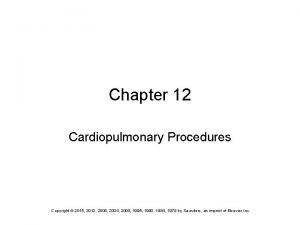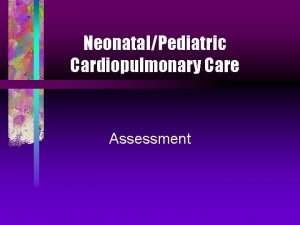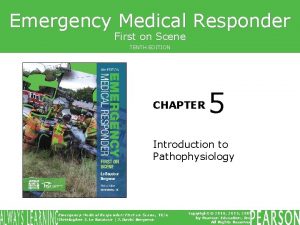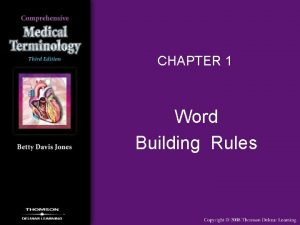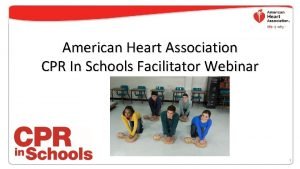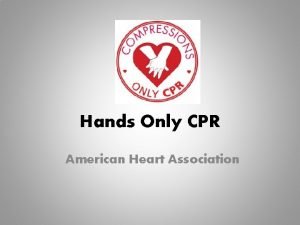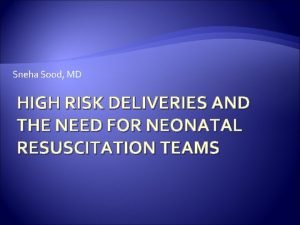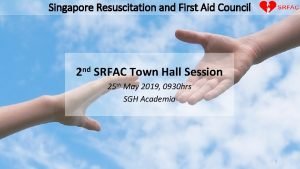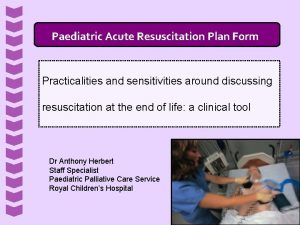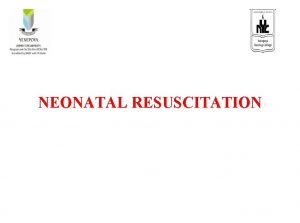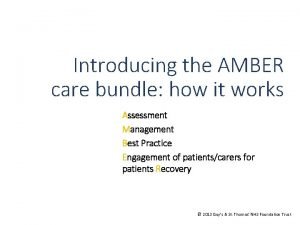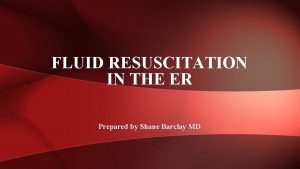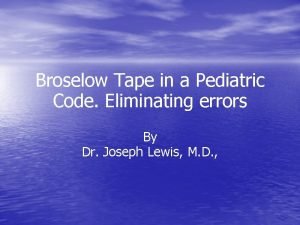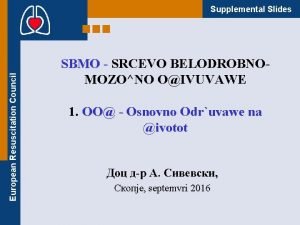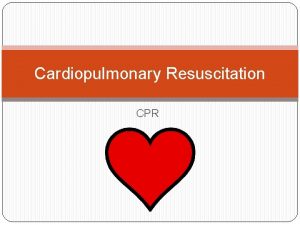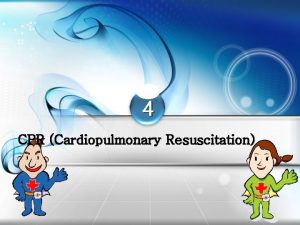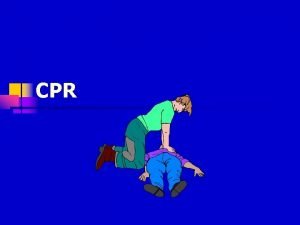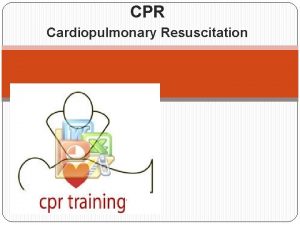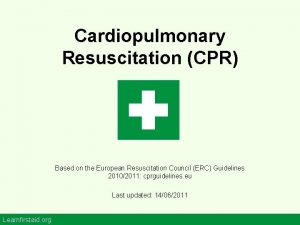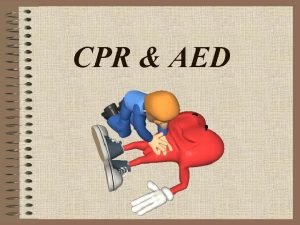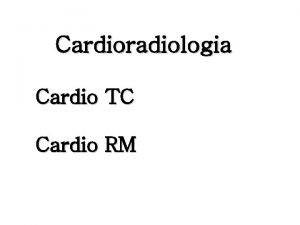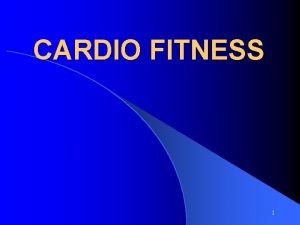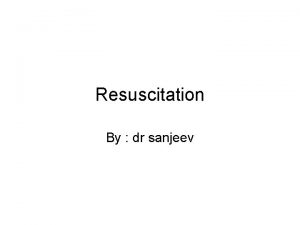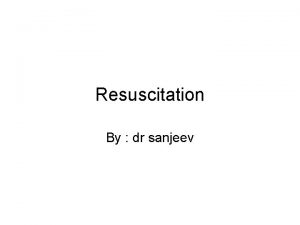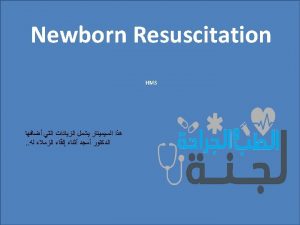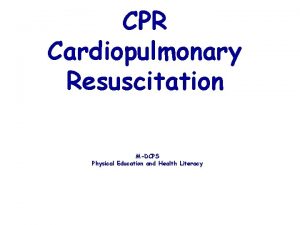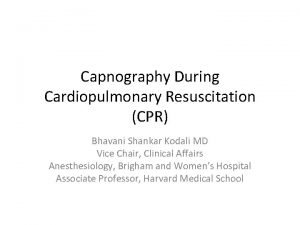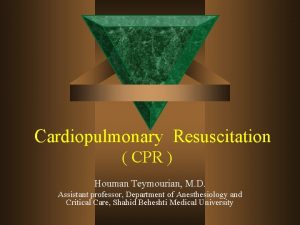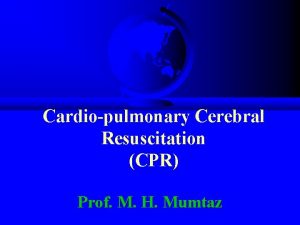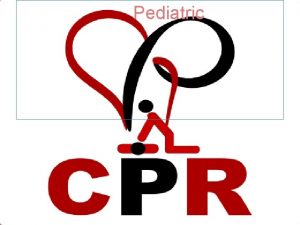CPR Definition n Cardiopulmonary Resuscitation n Cardio heart























- Slides: 23

CPR

Definition: n Cardiopulmonary Resuscitation n. Cardio = heart n. Pulmonary = lungs n. Resuscitation = to revive

Terminology n BLS n ALS n CAB n EMS

Good Heart Living n Controllable risk factors n Smoking n Hypertension n Cholesterol n Obesity n Lack of exercise n Stress n Diabetes

Good Heart Living n Uncontrollable n. Age n. Sex n. Race n. Heredity risk factors

Symptoms of Heart Attack or Stroke n Heart attack n Pain in chest, arm, neck, back, or jaw n Shortness of breath n Weakness n Feeling faint n Nausea n Unusual perspiration

Symptoms of Heart Attack or Stroke n Sudden severe headache n Vision problems n Loss of balance n Confusion n Numbness n Speech problems

First Aid Kits n AED n Face Mask

Minnesota’s Good Samaritan Law n 1) Duty to Assist: A person at the scene of an emergency who knows that another person is in physical harm, shall give reasonable assistance to the injured person as long as they are not in danger themselves. ~When you turn 18, it is your legal duty to call 911! n 2) General Immunity from Liability: A person who renders emergency care, advice, or assistance without compensation, at the scene of an emergency or during transit is NOT liable for any civil damages.

Links in the adult Chain of Survival: 1) Immediate recognition and activation of emergency response system: call 911 2) Early CPR, w/emphasis on chest compressions 3) Rapid defibrillation (AED) 4) Effective advanced life support 5)Integrated post-cardiac arrest care (new)

CAB’s for Infant , Child, & Adult n n C =Compressions: give 30 at a rate of 100 per minute A = Airway (open) n n n Head tilt, chin lift method Jaw thrust method B = Breathing (give two mouth to mouth breaths, chest rises)


New Guidelines n n The new CAB guidelines applies to infants (1 -12 months), children (1 -8 years) and adults (8 years +) It does NOT apply to newborns since newborns are usually unconscious due to respiratory complications

Adult CPR n n Place heel of one hand on sternum between nipples, cover with other hand interlocking fingers Give Compressions, push hard and fast in center of chest n n n 1 1/2 to 2 inches @ 100 per minute Open Airway, give 2 Breaths Repeat this until help arrives

Child CPR n n Use both hands or the heel of one hand on the sternum between nipples; the other hand is placed on the forehead to maintain head tilt Give 30 Compressions n n n 1 to 1 1/2 inches (1/3 the depth of the chest) @ 100 per minute Open Airway, give 2 Breaths Repeat this until help arrives

Infant CPR n n Use the tips of 2 fingers on the sternum 1 finger width below the nipples Give 30 Compressions n n n 1/2 to 1 inch ( 1/3 third depth of the chest) @ at least 100 per minute Open Airway by breathing over mouth & nose, give 2 Breaths (puffs) Repeat this until help arrives

Conscious Choking Infant n n n Call 911 If infant can cough or cry place them in a head down, face down position DO NOT give any back slaps or compression

Conscious Choking Infant n If there is no sound or sound faint and labored n n n Give 5 back slaps followed by… 5 chest compressions Repeat back slaps and chest compressions until object comes out or baby passes out

Unconscious Choking Infant n n Check for consciousness Call 911 Attempt ABC’s When first breath fails, re-tip and try again

Unconscious Choking Infant n When second attempt fails… n n n Give 30 chest compressions Do a foreign object check Sweep mouth with your pinky ONLY IF OBJECT IS VISIBLE Attempt to give breath If breath is unsuccessful repeat this routine beginning with compressions

Conscious Choking Child/Adult: The Heimlich Maneuver n n n n Ask victim if they are choking If unable to speak, ask if they want the Heimlich maneuver Call 911 Stand behind them, off-centered Reaching under their arms place thumb side of one fist between the navel and the sternum Cover that fist with your other hand begin upward, inward thrusts Continue until object comes out or victim passes out

Unconscious Choking Adult n n Check for consciousness Call 911 Begin ABC’s If breath attempt fails, re-tip and try again

Unconscious Choking Adult n n If second breath fails give 30 CPR style compressions Check foreign objects, remove any that are seen Attempt to give a breath If breath fails repeat routine beginning with compressions
 17.10 providing first aid for specific injuries
17.10 providing first aid for specific injuries Resuscitation cpr
Resuscitation cpr Resuscitation cpr
Resuscitation cpr Crossword puzzle cardiopulmonary procedures
Crossword puzzle cardiopulmonary procedures Cardiopulmonary
Cardiopulmonary Cardiopulmonary
Cardiopulmonary Megalocardia word parts
Megalocardia word parts Systemic circulation flow chart
Systemic circulation flow chart American heart association recommends child cpr for:
American heart association recommends child cpr for: American heart association cpr in schools training kit
American heart association cpr in schools training kit Hands only cpr american heart association
Hands only cpr american heart association Neonatal resuscitation definition
Neonatal resuscitation definition Apgar score
Apgar score Difference between resuscitation and resurrection
Difference between resuscitation and resurrection Srfac singapore
Srfac singapore Acute resuscitation plan form
Acute resuscitation plan form Site:slidetodoc.com
Site:slidetodoc.com Indication of baby bath
Indication of baby bath Amber care bundle nice
Amber care bundle nice Endpoint of resuscitation
Endpoint of resuscitation Broselow tape colors
Broselow tape colors Principle of resuscitation
Principle of resuscitation European resuscitation council
European resuscitation council European resuscitation council
European resuscitation council



